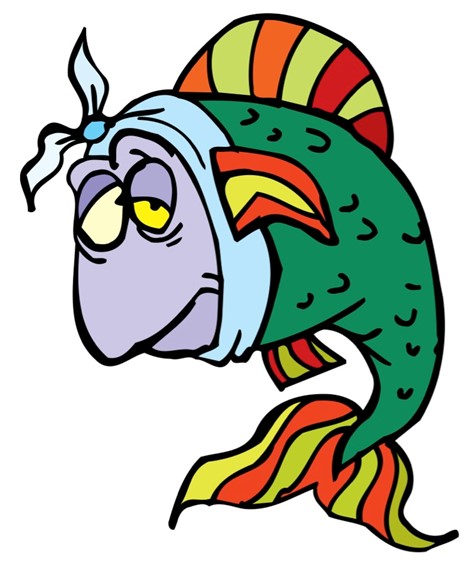When asked, “if you could eat one food for the rest of your life, what would it be?” my answer would be raw tuna sushi. I mean, who doesn’t love sushi? But are we all aware of the high mercury levels found in fish high up on the food chain? The article ‘Stable mercury concentrations of tropical tuna in the south western Pacific ocean: An 18-year monitoring study’ written by Anais Medieu et al (2021) explains that through global emissions of mercury and bioaccumulation and biomagnification processes, relatively high levels of mercury are found in tuna. Despite this, tuna is still one of the most eaten fish species in the world. The mercury levels are not only harmful to tuna and other fish species, but to humans who often eat fish as well.

Now first, How did the metals get there?
Mercury is a trace element that is widely distributed throughout the environment by natural and anthropogenic processes (Medieu, 2021).
“The burning of fossil fuels, mining, erosion, groundwater, hydrothermal vents and volcanic activities release mercury into the environment.”
As a result of the industrial era and associated increase in emissions, models have shown that the levels of mercury found in ocean surface waters have significantly increased since (Lamorg et al., 2014). This has a large impact on the food cycle as mercury, when converted into methylmercury, becomes highly persistent and biomagnifies (Medieu, 2021).
So, what on earth is biomagnification and bioaccumulation?
“Bioaccumulation is the uptake, storage, and accumulation of organic and inorganic contaminants by organisms from their environment” (Bruno, 1998).
As pollutants are released into the environment, fish gradually build up these contaminants in their body through aqueous and dietary uptake. Over longer periods this can become a concern and have harmful effects.
“Biomagnification is “the process where xenobiotic substances are transferred from food to an organism resulting in higher concentrations compared with the source.”
This process is extremely harmful for fish such as tuna, that occupy a higher level on the food chain because as fish size and life-span increases, the pollutant concentrations also increase. Mercury contamination in tuna mostly comes from their diet but can also accumulate from gas exchange across gills (Hall et al. 1997).

Figure 2 Bioaccumulation vs Biomagnification https://www.blue-growth.org/Plastics_Waste_Toxins_Pollution/Biomagnification_Bio_Accumulation.htm
What does this mean for tuna?
Now that we know the basics about bioaccumulation and biomagnification, we can discuss the effects that these processes have on the tuna that make up our sushi.
“As a result of biomagnification, the fish that we so much love to eat build up concerningly high concentration of mercury and methylmercury in their tissues and muscles (Adams and McMichael, 1999, Branco et al., 2007, Torres-Escribano et al., 2010). “

Although we might love the idea of catching the biggest tuna in the sea, the reality is, larger fish can feed on larger prey resulting in mercury levels that increase proportionally to the size of the tuna (Adams and McMichael, 1999, de Pinho et al., 2002).
So, Tuna Have a Lot of Mercury… What Does This Mean for Their Health?
High mercury levels are very harmful to organisms including fish and can cause major toxic effects such as impaired fertility and development. Due to mercury having teratogenic and carcinogenic effects, the genes, cells and tissues of tuna can be impacted. This may represent a major threats to population survival when fertility, growth and behavior are impacted. (Zheng, 2019)

Wait so if mercury levels are harmful to tuna…. Are they harmful to humans too?
Yes, mercury toxicity can happen in humans from being exposed to high concentrations of mercury.
“Loss of vision, impaired speech, inability to walk, headaches, dizziness, tremors, insomnia, and poor mental function are all signs of mercury and methylmercury poisoning”

Even small amounts of exposure to mercury can have toxic effects on multiple areas of the body such as the nervous, digestive, and immune systems, and on lungs, kidneys, skin and eyes and can even be fatal (WHO, 2017).
Okay, so……What can we do to help?
Promote clean energy research
Finding replacements to coal and other fossil fuels will help lower the impact of mercury being released into the environment.
Eliminate mining of mercury
Mercury can never be broken down therefore should be recycled rather than further mining.
Continue research on Hg Trends
Researching and watching trends in mercury concentrations can form ideas on how to lessen our impact.
References
Adams and McMichael, 1999 D.H. Adams, R.H. McMichael Mercury levels in four species of sharks from the Atlantic coast of Florida Fish. Bull., 97 (2) (1999), pp. 372-379
Branco, V., Vale, C., Canário, J., & Santos, M. N. d. (2007). Mercury and selenium in blue shark (Prionace glauca, L. 1758) and swordfish (Xiphias gladius, L. 1758) from two areas of the Atlantic Ocean. Environmental Pollution, 150(3), 373-380. doi:https://doi.org/10.1016/j.envpol.2007.01.040
de Pinho, A. P., Guimarães, J. R. D., Martins, A. S., Costa, P. A. S., Olavo, G., & Valentin, J. (2002). Total Mercury in Muscle Tissue of Five Shark Species from Brazilian Offshore Waters: Effects of Feeding Habit, Sex, and Length. Environmental Research, 89(3), 250-258. doi:https://doi.org/10.1006/enrs.2002.4365
Hall, B., Bodaly, R. A., Fudge, R., Rudd, J., & Rosenberg, D. M. (1997). Food as the Dominant Pathway of Methylmercury Uptake by Fish. Water Air and Soil Pollution, 100, 13-24. doi:10.1023/A:1018071406537
Kwon, S. Y., Blum, J. D., Madigan, D. J., Block, B. A., & Popp, B. N. (2016). Quantifying mercury isotope dynamics in captive Pacific bluefin tuna (Thunnus orientalis). Elementa: Science of the Anthropocene, 4. doi:10.12952/journal.elementa.000088
Lamborg, C., Hammerschmidt, C., Bowman, K., Swarr, G., Munson, K., Ohnemus, D., . . . Saito, M. (2014). A global ocean inventory of anthropogenic mercury based on water column measurements. Nature, 512, 65-68. doi:10.1038/nature13563
Médieu, A., Point, D., Receveur, A., Gauthier, O., Allain, V., Pethybridge, H., . . . Lorrain, A. (2021). Stable mercury concentrations of tropical tuna in the south western Pacific ocean: An 18-year monitoring study. Chemosphere, 263, 128024. doi:https://doi.org/10.1016/j.chemosphere.2020.128024
Streit, B. (1998). Bioaccumulation of contaminants in fish. In T. Braunbeck, D. E. Hinton, & B. Streit (Eds.), Fish Ecotoxicology (pp. 353-387). Basel: Birkhäuser Basel.
Torres-Escribano, S., Vélez, D., & Montoro, R. (2010). Mercury and methylmercury bioaccessibility in swordfish. Food Additives & Contaminants: Part A, 27(3), 327-337. doi:10.1080/19440040903365272
Zheng, N., Wang, S., Dong, W., Hua, X., Li, Y., Song, X., . . . Li, Y. (2019). The Toxicological Effects of Mercury Exposure in Marine Fish. Bulletin of Environmental Contamination and Toxicology, 102(5), 714-720. doi:10.1007/s00128-019-02593-2



Recent Comments